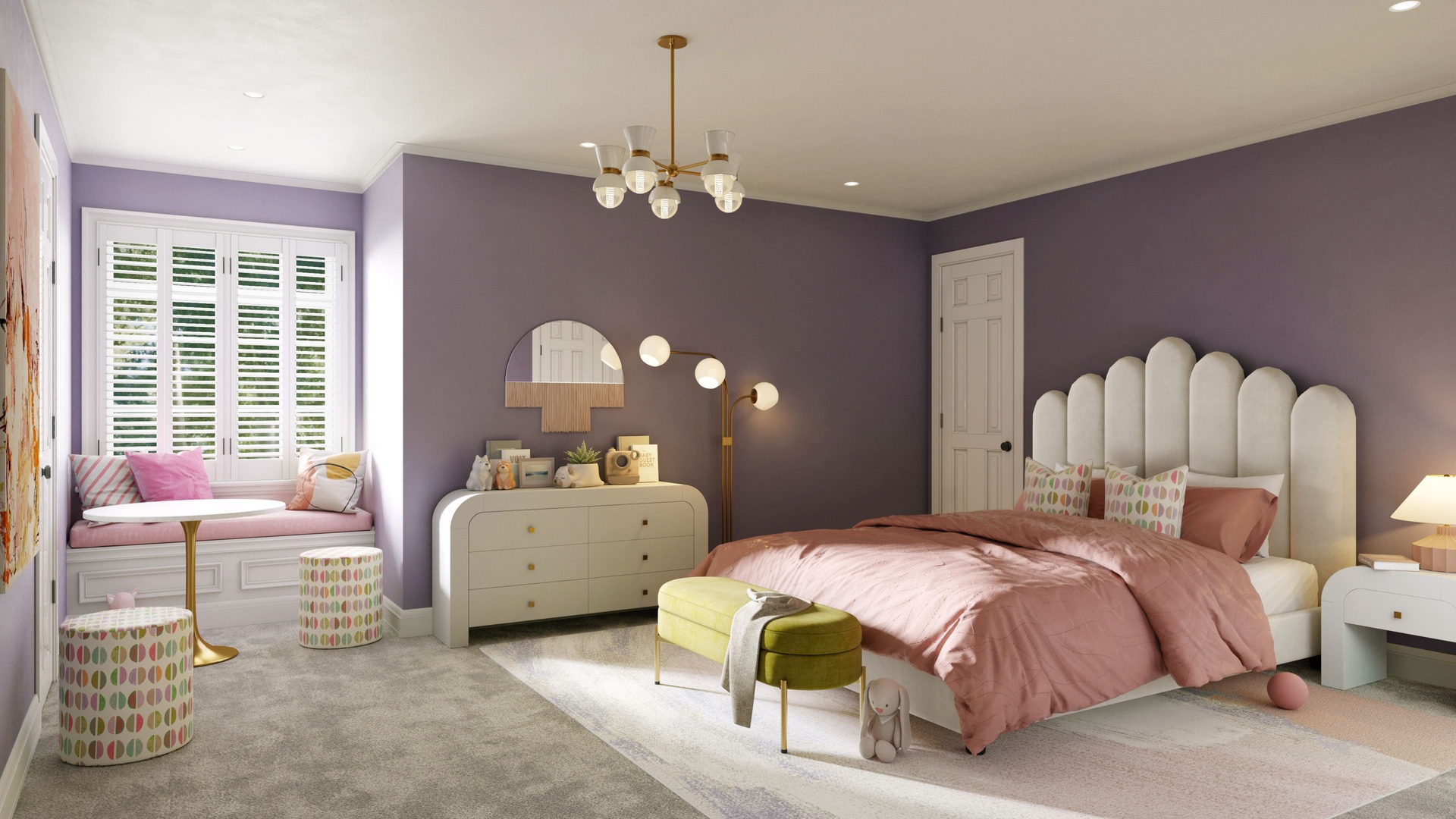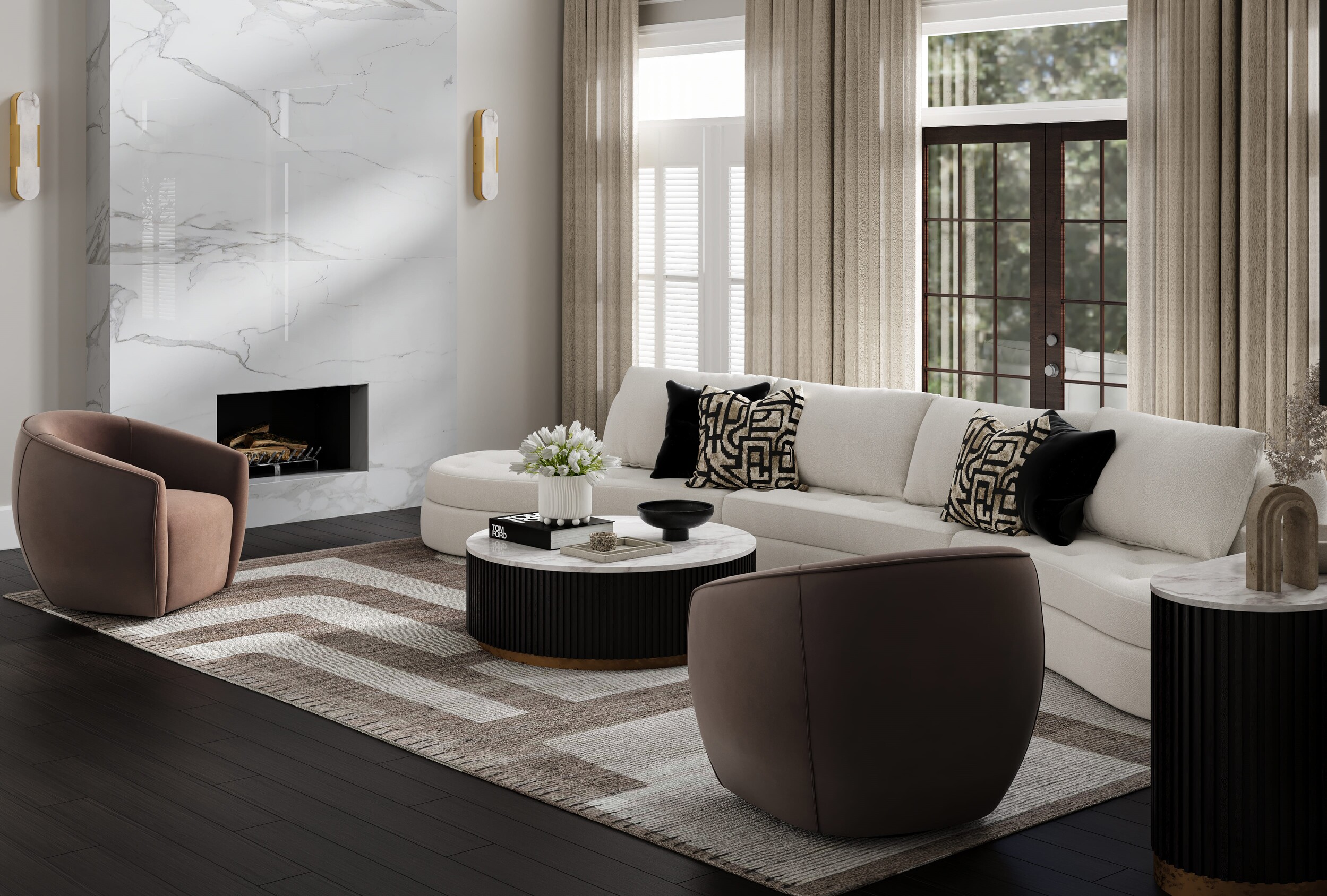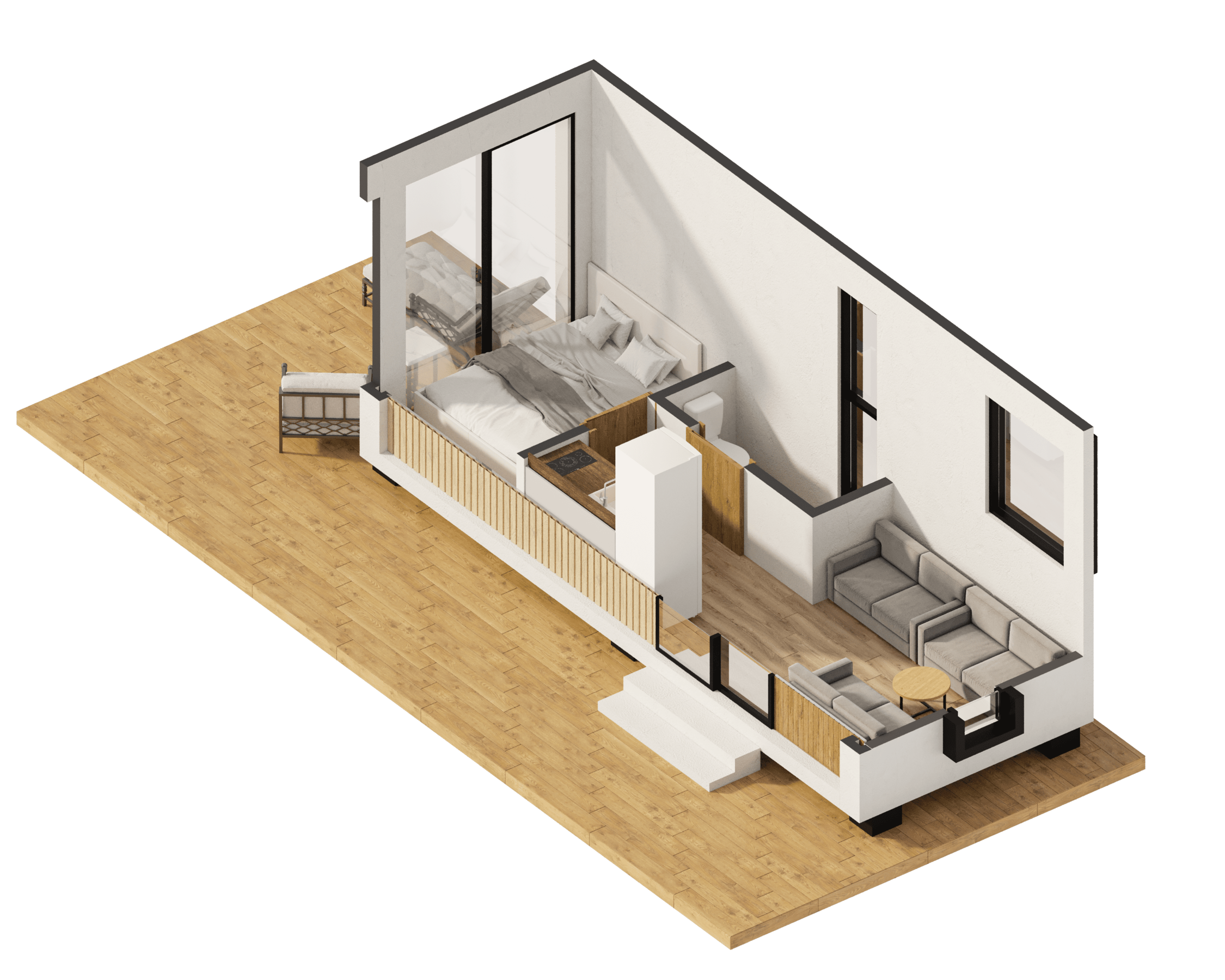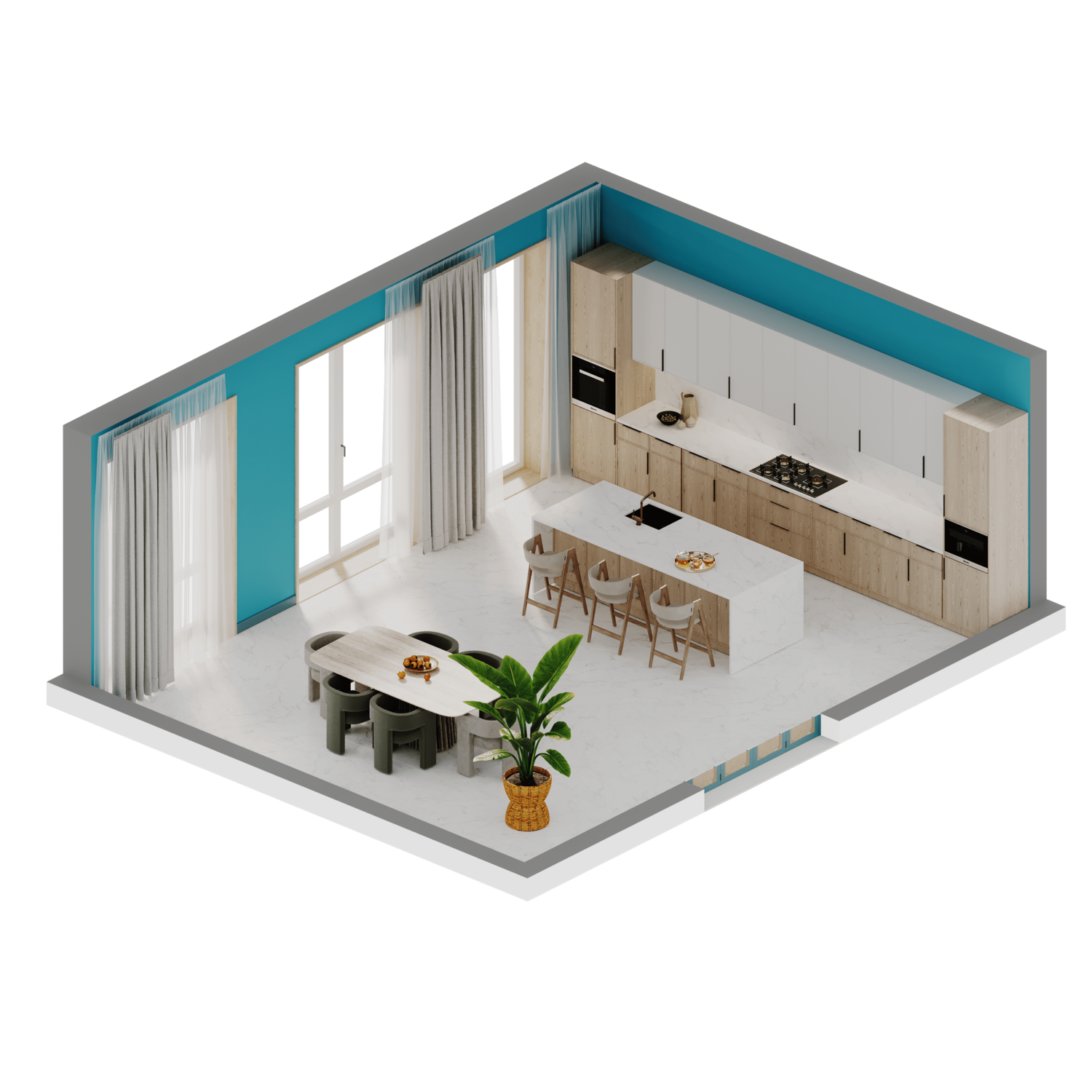AI in Product Animation: Bringing Furniture to Life
At YouSee Studio, we are currently investigating the potential of AI technologies to enhance our traditional 3D modeling processes. This article provides insights into potential AI applications in 3D rendering, reflecting our commitment to innovation and excellence.
In bustling metropolises worldwide, where cutting-edge technology meets luxurious living, a revolution is quietly unfolding in interior design and furniture retail. Artificial Intelligence (AI) is breathing life into static furniture pieces, transforming how consumers visualize and interact with potential purchases. This technological leap is not just changing the face of e-commerce; it's redefining the entire furniture shopping experience.
The Genesis of AI-Powered Furniture Animation
The journey of AI in furniture animation began with a simple question: How can we make online furniture shopping as engaging and informative as visiting a physical showroom? Traditional 3D modeling and animation techniques were time-consuming and expensive, limiting their application to high-end products. Enter AI with its ability to learn, adapt, and create at unprecedented speeds.
In 2018, a groundbreaking study by researchers at a leading technology institute demonstrated that AI could generate realistic 3D furniture models from a single 2D image. This discovery laid the foundation for what would become a multi-billion dollar industry. Today, AI-powered furniture animation is not just a novelty; it's a necessity for forward-thinking retailers and designers.
How AI Brings Furniture to Life
At its core, AI-powered furniture animation relies on sophisticated machine learning algorithms, particularly Generative Adversarial Networks (GANs) and Deep Learning models. These systems are trained on vast datasets of furniture images, 3D models, and animation sequences. The result? AI that can:
- Generate realistic 3D models from 2D images
- Animate furniture pieces with natural movements
- Simulate different materials and textures
- Create interactive, customizable furniture visualizations
But the magic doesn't stop there. Advanced AI systems can now interpret natural language instructions, allowing designers and customers to describe the animations they want in plain language. "Show me how this sofa would look if it transformed into a bed," a customer might say, and the AI would oblige, creating a smooth animation of the transformation.
The Impact on the Furniture Industry
The adoption of AI in furniture animation has been nothing short of transformative. According to a 2023 report by FurniTech Analytics, companies that implemented AI-powered visualization tools saw an average increase of 37% in online sales conversion rates. This statistic is particularly significant for the global market, where e-commerce furniture sales have rapidly grown, reaching billions of dollars annually.

Image from Yousee Studio
AI-powered furniture animation has found fertile ground in regions known for luxury and innovation. Since 2020, design districts in major cities worldwide have seen a significant increase in furniture start-ups leveraging AI technology. These companies are not just serving local markets but exporting their AI-powered solutions globally, contributing to the vision of becoming leaders in AI innovation.
AI Animation Techniques: Beyond the Basics
While the ability to create 3D models and basic animations is impressive, cutting-edge AI pushes the boundaries even further. Here are some advanced techniques that are redefining the field:
Physics-Based Animation
AI models are now incorporating physics engines to create more realistic animations. This means that when a chair is animated to fold, or a table extends, the movement respects the laws of physics, accounting for factors like gravity, friction, and the material properties of the furniture.
A notable example is the work done by researchers at a prestigious university, who developed an AI system that can predict the physical behavior of objects with 95% accuracy. This technology allows for the creation of furniture animations that are not just visually appealing but also physically plausible.
Emotional Design Animation
In a surprising turn, AI can now imbue furniture animations with emotional qualities. By analyzing vast datasets of human reactions to different design elements, AI can create animations that evoke specific emotional responses.
For instance, a luxury furniture brand recently used AI to create a "mood-responsive" furniture collection. The AI-generated animations showcased how the furniture pieces could subtly change shape or color to match the user's emotional state, as detected by embedded sensors. While still in the conceptual stage, this project highlights the potential for AI to create profoundly personalized and emotionally resonant furniture experiences.
AI-Powered Customization on the Fly
One of the most exciting developments in AI-powered furniture animation is real-time customization. Imagine a customer browsing an online furniture store. As they view a sofa, they can use voice commands or text inputs to customize and animate the piece instantly.
A customer might request, "Show me this leather sofa with taller legs and transform it into a sectional." The AI would then generate a new 3D model on the fly, apply the requested changes, and create a smooth animation showcasing the transformation. This level of interactivity was once the domain of high-end 3D modeling software; now, thanks to AI, it's accessible through a web browser.
The Role of AI in Sustainable Furniture Design
As sustainability becomes increasingly important in the furniture industry, AI is crucial in promoting eco-friendly design through animation. By simulating the lifecycle of furniture pieces, from production to disposal, AI can help designers and consumers make more informed decisions.
In environmentally conscious markets, AI-powered platforms have gained significant traction. These platforms use AI to animate the environmental impact of different furniture designs, showing how materials decompose, how much energy is used in production, and even simulating the furniture's carbon footprint over time.
The impact has been substantial. According to a recent industry survey, furniture companies using AI-powered sustainability visualization tools have seen a 42% increase in sales of eco-friendly products since 2021. This demonstrates the power of AI not just as a sales tool and a force for positive change in the industry.
AI and Augmented Reality: A Perfect Match
Integrating AI-powered furniture animation with Augmented Reality (AR) has opened up new possibilities for immersive shopping experiences. Furniture retailers are at the forefront of this trend in markets where AR adoption in retail has increased.
A leading global furniture chain has developed an AI-AR system that allows customers to place animated 3D furniture models in their homes using smartphones. The AI doesn't just put a static model in; it animates the furniture, responding to the home environment. For example, a dining table might automatically extend when the AI detects that the room can accommodate more seating.

Image from Yousee Studio
This fusion of AI and AR is not just a gimmick; it's driving actual business results. Retailers using this technology have reported a significant reduction in returns for items purchased through their AI-AR apps compared to traditional online purchases.
The Human Touch in AI Animation
While AI is undoubtedly revolutionizing furniture animation, the human element remains crucial. A new breed of professionals is emerging globally: AI-human collaborative designers. These individuals work alongside AI systems, guiding the creative process and ensuring the animations align with brand aesthetics and cultural sensitivities.
Leading design schools worldwide have introduced pioneering courses in AI-assisted furniture design and animation, dramatically increasing enrollment since their introduction. Meanwhile, universities are partnering with tech firms to offer internships in AI-powered design, preparing the next generation of professionals for this hybrid field.
Ethical Considerations and AI Transparency
As AI becomes more prevalent in furniture animation and retail, ethical considerations become paramount. There's a growing demand for transparency in how AI systems make decisions and generate animations. In response, companies are developing "AI transparency reports" for their furniture animations, detailing the data sources, algorithms used, and potential biases in the system.
Industry associations are taking a proactive approach, establishing guidelines for the ethical use of AI in furniture visualization. These guidelines, adopted by a majority of member companies, ensure that AI-generated animations are clearly labeled as such and that customers are informed about the technology's limitations.
Conclusion: The Animated Future of Furniture
As we stand on the cusp of a new era in furniture design and retail, it's clear that AI-powered animation is not just a passing trend but a fundamental shift in how we interact with and perceive furniture. From innovative tech hubs to luxurious showrooms worldwide, AI is reshaping the industry, one animated piece at a time.
The future promises even more exciting developments. As AI continues to evolve, we can expect to see furniture that not only animates on screen but perhaps even in real life, responding to our needs and environment in ways we've only begun to imagine. The line between the virtual and physical furniture world is blurring, and AI is the brush painting this new reality.
For consumers, designers, and retailers alike, the message is clear: embrace the animated future of furniture. It is already here, transforming our homes one AI-powered visualization at a time. Whether you're in a sleek urban apartment or a spacious villa, the future of furniture is not just to be seen but to be experienced in living, moving color.
Contact us at YouSee Studio for captivating 3D renderings and immersive virtual experiences.
Karen Spacey is a content writer and the author of this article.





